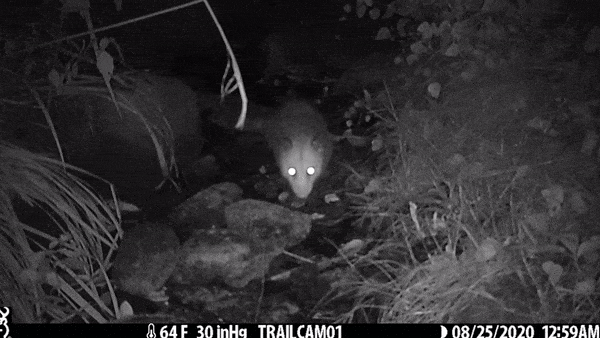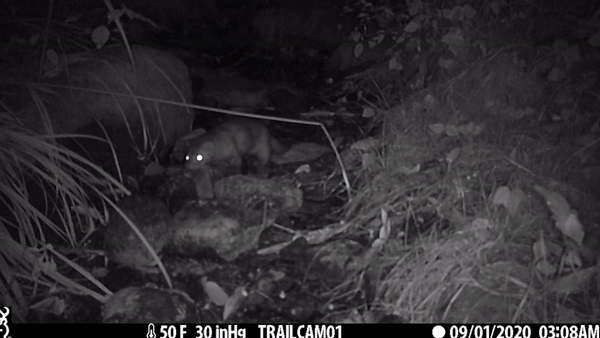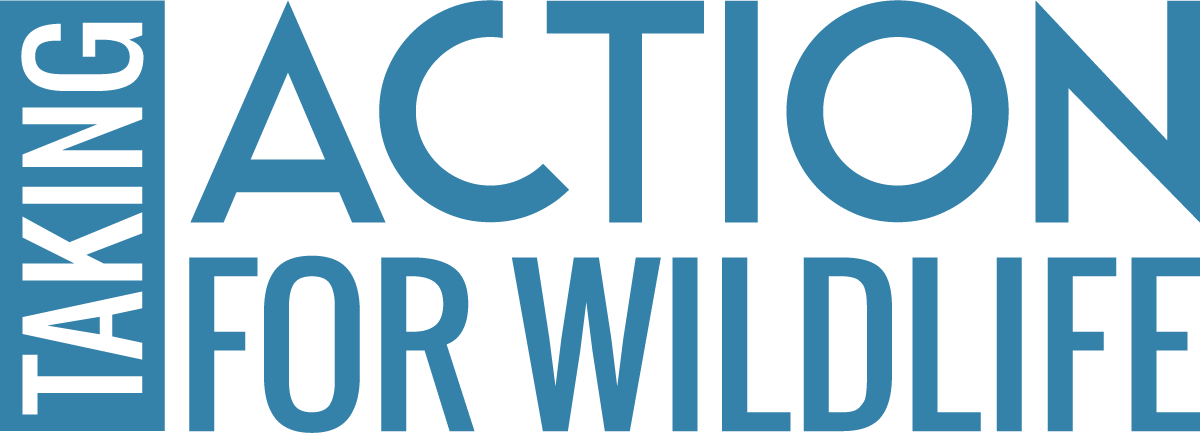The Secret Life of Wildlife: Using Trail Cameras on Your Land
Like many others, I’ve been spending more time than usual at home over the past 6 months. During this time, I was inspired to pay closer attention to nature in my own backyard. I happen to have 3 trail cameras, but all too often they are sitting on my desk and not deployed out in the world where they should be. So, I made a point of leaving the trail cameras out more often and for longer periods of time on my own 2-acre property to see what wildlife are doing when we no one is watching. The most fruitful location was along the dry bed of the intermittent stream that runs along the back of our property. We often talk about streams being corridors for wildlife movement, but it was so great to see that even a small, intermittent stream (that really only holds water for 6 months of the year, even in years when we aren’t having a severe drought) serves as a little highway for wildlife to move through the forest.
Here are a few highlights from the camera:
A red squirrel, clearly storing food away for winter, as I captured it traveling back and forth repeatedly with mouth full after mouth full of shagbark hickory nuts.

A Virginia opossum who seemed to travel back and forth nightly along the streambed.

A mink, which also made regular appearances, but this time with a snack in its mouth!

This was the least-expected subject caught on camera, a Louisiana Waterthrush, likely a migrant, looking for food in the stream bed!

Trail cameras can be a great tool to inventory and monitor wildlife on your property. You can find relatively inexpensive cameras these days, and they are a fun way to connect with nature in your own backyard, and learn more about wildlife behavior. I can’t wait to see what I find on my camera as the season changes to winter! Earlier this summer we hosted wildlife expert, Janet Pesaturo, to present Using Trail Cameras to Study Wildlife Behavior. You can access the recording of her presentation here.
by Emma Tutein, Natural Resources Conservation Field Specialist, UNH Cooperative Extension
2020 Fall Taking Action for Wildlife Newsletter


